
Western Rattlesnake (Crotalus oreganus)
Snakes Around Las Vegas, Wildlife Around Las Vegas
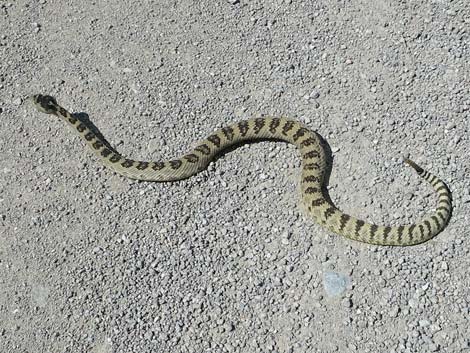 |
General Description: Great Basin Rattlesnakes (Crotalus oreganus lutosus) are medium-sized, heavy-bodied snakes with broad, triangular-shaped heads and rattles on the tail. A white facial stripe extends from behind the eye to the corner of the mouth. The dorsal pattern is variable, ground color usually tan or light gray. Dark blotches have a light center and even lighter borders. Black and white tail rings (the color of the light tail rings similar to body color). Dorsal blotches about as wide and the spaces between them. These snakes are venomous. Do not attempt to handle rattlesnakes; rather, enjoy your good luck of finding one from a distance (minimum 4 feet away) and leave them alone. Taxonomy: Pit Vipers Family (Viperidae). Formerly, this was a subspecies of the Western Rattlesnake (Crotalus viridus), but the Western Rattlesnake was split into Prairie Rattlesnake (Crotalus viridus) of the Great Plains and the Western Rattlesnake (Crotalus oreganus) of the Intermountain and Pacific states. The Great Basin Rattlesnake is now Crotalus oreganus lutosus. |
 |
Technical Description: Body size long and heavy (to 65 inches). Ground color gray, buff, or tan. White facial stripe extends from behind the eye to the corner of the mouth. Dorsal pattern dark blotches edged with a darker color and light-colored borders. Tail with dark and light rings, but light rings similar to body color. Dorsal blotches about as wide as the spaces between them. Diet: Small mammals to the size of rabbits, birds, lizards, snakes, and amphibians. Habitat: Rocky outcrops, rocky slopes, rocky streambeds, and areas with ledges; from desert valleys to timberline. Range: The species range extends from southwestern Canada to northern Mexico, and from the Pacific Coast east to Idaho, western Wyoming, and western New Mexico. This subspecies occurs in the Great Basin from northeastern California, all of Nevada except the southern tip (from the mountains north of Las Vegas northward), southern Oregon, southern Idaho, western Utah, northwestern Arizona. |
 |
Breeding: Give birth to live young, usually 4 to 12 (to 25), which are born in late summer and fall. Similar Species: Superficially, the rattlesnakes all look similar, but if you count rostral scales (not recommended), no other rattlesnake has three or more internasals touching the rostral. Consider the eye stripe and the tail banding color and pattern. Comments: This is not an aggressive, stand-your-ground species. Given the opportunity, this species will move quickly to what it considers a safe place to sit and hide. Special Remarks: Venomous. |
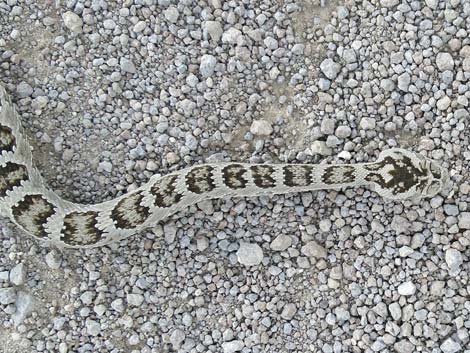 |
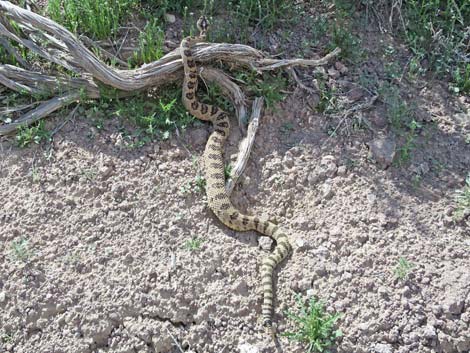 |
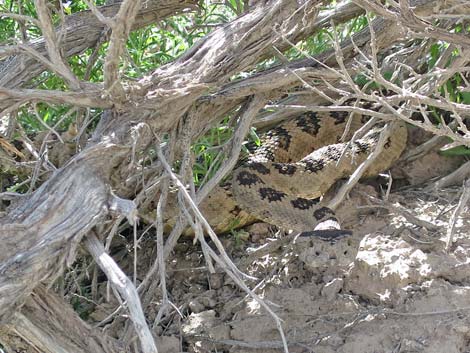 |
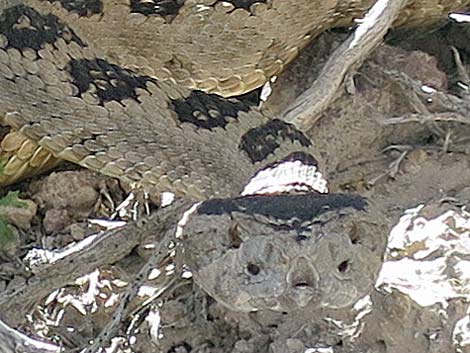 |
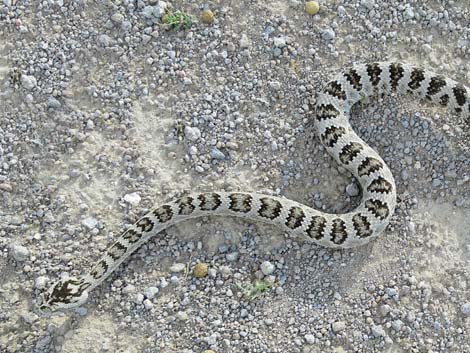 |
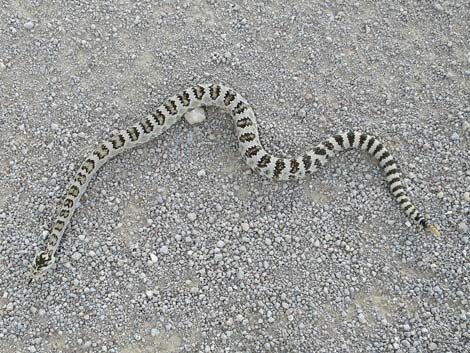 |
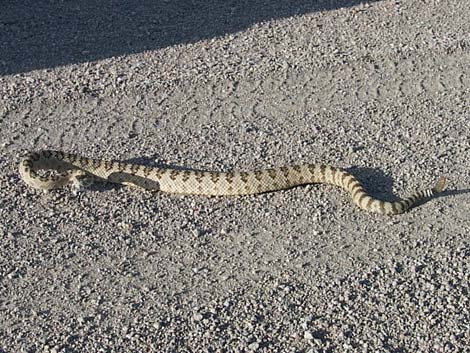 Tan with dark blotches (central Nevada) |
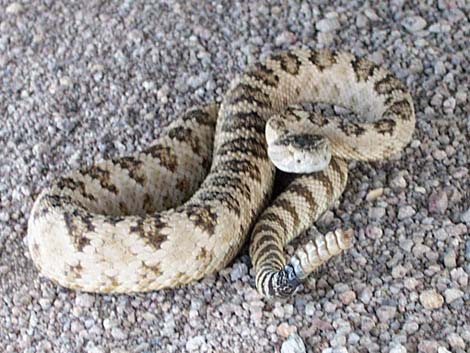 Great Basin Rattlesnake (central Nevada) |
 Dark blotches about as wide as light interspaces (central Nevada) |
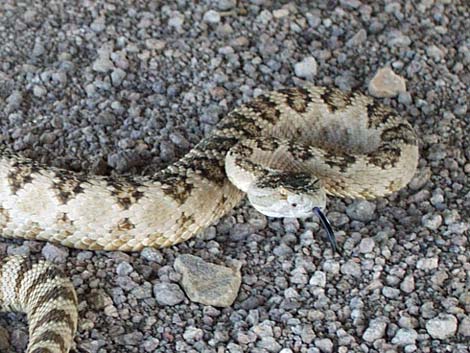 Light stripe extends from in front of eye to corner of mouth |
 Basin and Range National Monument |
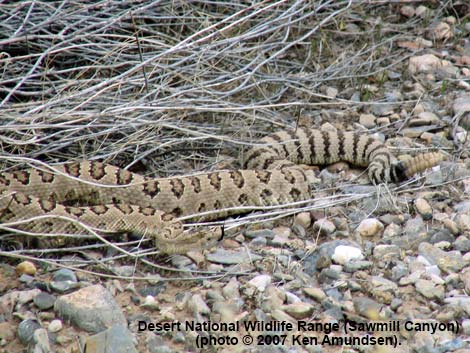 Desert National Wildlife Range (Sawmill Canyon) |
Note: All distances, elevations, and other facts are approximate.
![]() ; Last updated 190609
; Last updated 190609
| Snakes Around Las Vegas | Wildlife Around Las Vegas | Glossary | Copyright, Conditions, Disclaimer | Home |